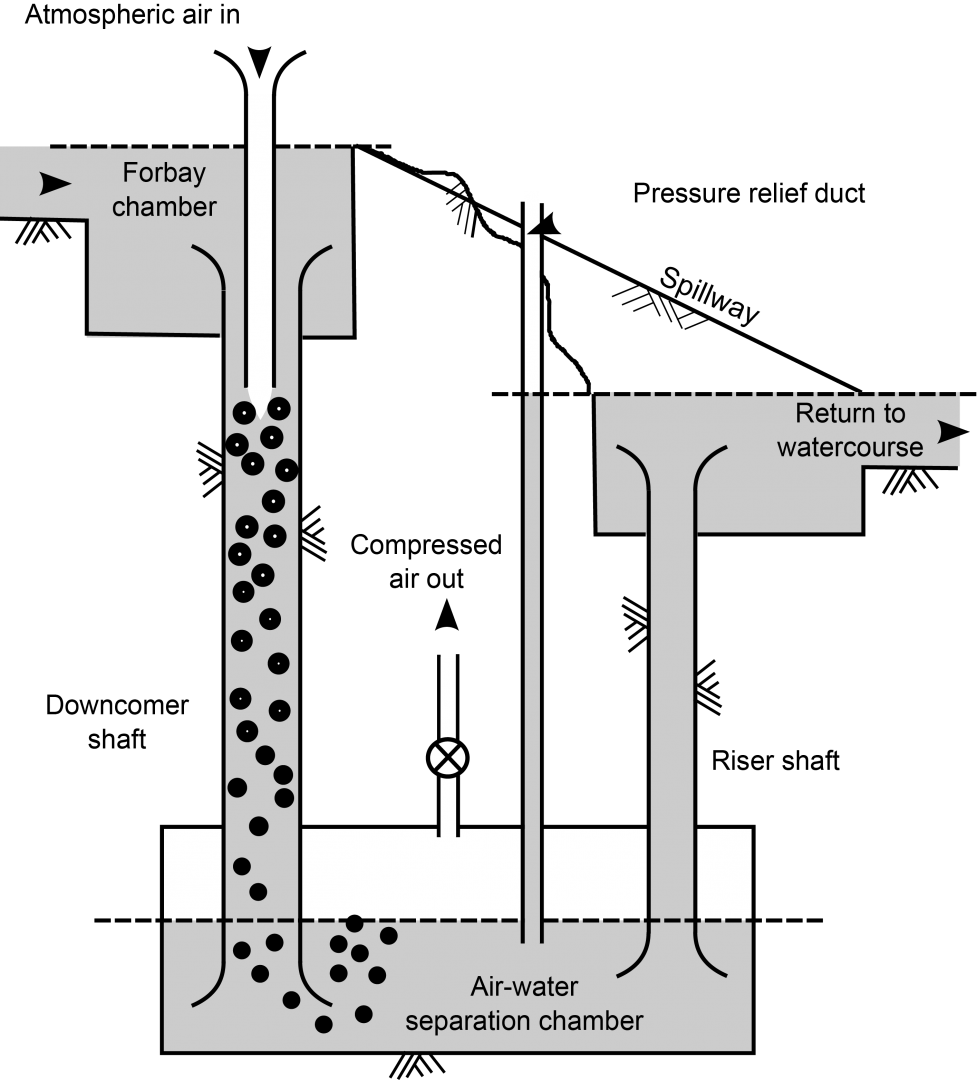THE ISSUE
The Ultra-deep mining environment (below 2.5km) is of growing importance for the modern mining sector but presents key mining challenges. One of these is maintaining an acceptable working environment while the air temperatures at these depths, which can be upward of 40°C, before entering mine areas.
THE SOLUTION
Using the energy from water flow in a natural watercourse to produce compressed air is not new; 100 years ago such installations were termed hydraulic air compressors. Today, if natural hydropower resource can be harnessed, compressed air from this technology could be produced at close to zero marginal cost. Such a benefit forces reappraisal of processes and methods that were proposed for mines in the past, but eliminated due to the high cost of compressed air. One example of this is utilization of Hydraulic Air Compressors (HAC) to cool and dehumidify the bulk mine ventilation air in deep mines, the topic of investigation for this project.
INNOVATION IN PROGRESS
Based on research findings to date, a patent application has been made for novel uses of a Hydraulic Air Compressor. Ongoing studies will assess this method of cooling and
dehumidifying deep mines. The technology also shows promise as a method of carbon capture from fossil fuel burning plants and as a method for domestic air conditioning.
This work was developed within the framework of research projects for Smart Underground Monitoring and Integrated Technologies for Deep Mining (SUMIT).

The hydraulic air compressor (HAC) is driven only by water, held up by a dam, to create relatively low head (typically 10-20 metres), such that the developed hydropower is used to cause flow in openings deeper underground. Air is entrained in the water at the inlet to the sub-surface openings and is compressed as it is carried along by the deepening water flow. At depth air bubbles separate out of the water flow and are collected in a receiver space above the flowing water creating a reservoir of compressed air that is much drier than that would be produced from a contemporary mechanical compressor. Water, free of air, then passes back up a return shaft (up-pipe) and rejoins the river or stream flow. The HAC installed at Ragged Chutes, near Cobalt, Ontario operated near continuously for 70 years, supplying free air delivery of 40,000 cfm (68,000 Sm3/h) at a pressure of ~130 psi (8.9 bar) for around 70 years, only being stopped twice for repairs to its intake head.
Contact
- Dean Millar, MIRARCO, Laurentian University
- 1-705-675-1151 x 5071
- dmillar@mirarco.org
- www.mirarco.org


